Click on images to enlarge
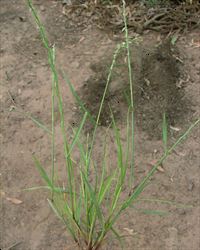
habit (Photo: Sheldon Navie)
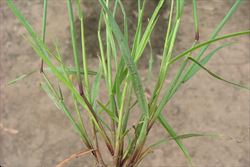
stems and leaves (Photo: Sheldon Navie)

young seed-head (Photo: Sheldon Navie)
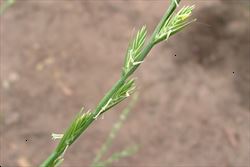
close-up of flower spikelets during flowering (Photo: Sheldon Navie)
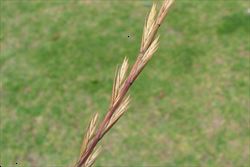
mature seed-head (Photo: Sheldon Navie)
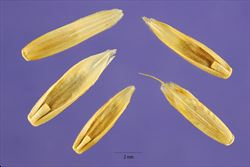
close-up of seeds (Photo: Steve Hurst at USDA PLANTS Database)
Scientific Name
Lolium rigidum Gaud.
Synonyms
Lolium multiflorum Lam. var. rigidum (Gaud.) Trab.Lolium perenne L. subsp. rigidum (Gaudich.) A. Love & D. LoveLolium rigidum Gaud. var. rottboellioides Heldr. ex Boiss.Lolium subulatum Vis. (misapplied)
Family
Gramineae (South Australia)Poaceae (Queensland, New South Wales, the ACT, Victoria, Tasmania, Western Australia and the Northern Territory)
Common Names
annual rye grass, annual ryegrass, rigid ryegrass, rigid rye grass, ryegrass, stiff darnel, Swiss ryegrass, Wimmera rye, Wimmera rye grass, Wimmera rye-grass, Wimmera ryegrass
Origin
Native to northern Africa (i.e. Algeria, Egypt, Libya, Morocco and Tunisia), southern Europe (i.e. Switzerland, France, Portugal, Spain, Albania, Bulgaria, Greece, Italy, Yugoslavia and southern Ukraine), western Asia and the Indian sub-continent (i.e. India and Pakistan).
Naturalised Distribution
This species is widely naturalised in southern, central and eastern Australia. It most widespread and common in New South Wales, the ACT, Victoria, Tasmania, South Australia, and south-western Western Australia. Occasionally also naturalised in southern and central Queensland, the southern parts of the Northern Territory, and other parts of Western Australia. Also naturalised on Lord Howe Island and Norfolk Island.
Notes
Annual ryegrass (Lolium rigidum) is grown as a pasture grass and is also known a widespread weed of crops in the temperate regions of Australia. However, this species also invades natural vegetation and is regarded as an environmental weed in Victoria and Western Australia.

